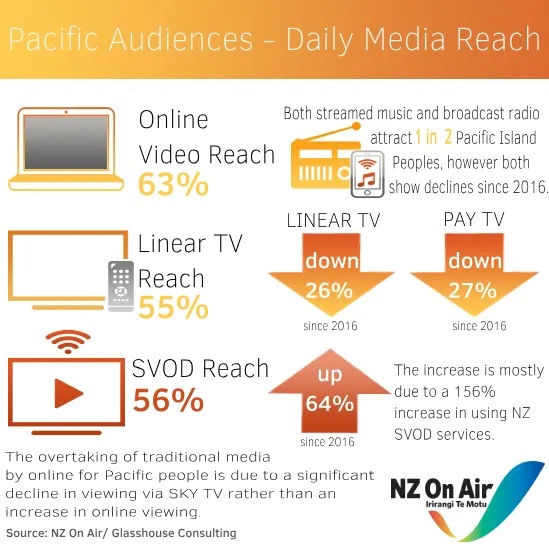Alongside the release of the Where Are The Audiences? 2018 report NZ On Air partnered with the Health Promotion Agency to commission four separate reports on specific target audiences - Māori, Pacific, 15-24 yr olds, and lower socio-economic New Zealanders.
These reports compare weekly and daily media use across a range of platforms, providing a single source of objective media information.
You can read all the key findings below.


